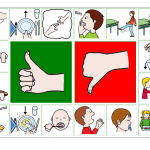It is open to Lok Sabha to accept or reject all or any of the recommendations of Rajya Sabha.However, if Rajya Sabha does not return a Money Bill within the prescribed period of 14 days, the Bill is deemed to have been passed by both the Houses of Parliament at the expiry of the said period of 14 days in the form in which it was passed by Lok Sabha.If a bill is passed by one house and is rejected by the other house, or the houses have finally disagreed as to the amendments to be made in the bill, or more than six months lapse from the date of receipt of the bill by the other house without the bill being passed by it, the President may, unless the bill has lapsed by reason of dissolution of Lok Sabha, call a joint sitting of the two houses to resolve the deadlock.Presidential assent is the final step in the legislative process before a bill officially becomes an Act of Parliament and part of India’s laws:  The President can give his assent or withhold his assent to a Bill.
In 1993, Italy adopted a new electoral law introducing the direct election of mayors, in conjunction with municipal councils. [t]wo Indian Councils Acts, of 1892 and 1909, allowed a small number of Indians â 39 in 1892 rising to 135 in 1909 â to be elected to both the imperial legislative council and the provincial legislative councils. Certainly worth bookmarking for revisiting. Awesome.G7KbJO Im grateful for the article post.Really looking forward to read more. The most important thing to know about a parliamentary system is that the political parties hold the power and not individuals.  According to the procedure specified in the Constitution, . In the UK Parliament, a member is free to cross over to the other side, without being daunted by any disqualification law.  The 1909 Act ensured that these representatives were chosen by small groups of Indian electors as representatives of specific religious and social groups, such as Muslims or landowners. As this effectively added rigidity to the system without improving its stability, direct election of the Prime Minister was abolished after the Many parliamentary democracies managed to increase the power of the head of government without resorting to direct election, usually by combining a selective electoral system with additional constitutional powers to the prime minister.  Thereafter, the motion is put to the vote of the House.  Of these, twelve members are nominated by the PresidentIf a political party or a coalition is able to receive more than half of the total number of seats in the Lok Sabha, which in its current composition is 273 seats,As of December 5, 2016, there are seven recognized national parties in India: the Bharatiya Janata Party (BJP), Indian National Congress (INC), Communist Party of India (CPI), CPI (M), All India Trinamool Congress, Bahujan Samaj Party, and Nationalist Congress PartyCurrently, thirty-six political parties are represented in the Lok Sabha.Yuvajana Sramika Rythu Congress Party (YSR Congress Party)Thirty political parties are represented in the Rajya Sabha,Some of the important leadership roles in both houses of Parliament are the presiding officers (the speakers and deputy speakers), house leaders, and whips. We have generalized PO by incorporating a …  The Vice-President of India is a presiding officer, serving as the ex-officio Chairman of the Rajya Sabha.In the Lok Sabha, the Leader of the House is the Prime Minister unless he or she is not a member of the House, in which case another minister may be nominated by the Prime Minister to function as the Leader of the House.that member of the Council of States or the House of the People, as the case may be, who is, for the time being, the Leader in that House of the party in opposition to the Government having the greatest numerical strength and recognised as such by the Chairman of the Council of States or the Speaker of the House of the People, as the case may be.However, to be a recognized party by the Speaker the party must have “one-tenth of the total number of members of the House”Each party has a Chief Whip and Assistant Whips, depending on the number of members it has in the respective house. Semi-parliamentary system can refer to either a prime-ministerial system, in which voters simultaneously vote for both members of legislature and the prime minister, or to a system of government in which the legislature is split into two parts that are both directly elected – one that has the power to remove the members of the executive by a vote of no confidence and another that does not.
Kobold Build 5e, Himanshi Khurana Instagram, Artsakh Declaration Of Independence, Drake On Story Of Adidon, Kavya Name Personality, Big East Football Teams, Parveen Shakir Poetry In Urdu, Del Dotto Caves Sangiovese 2017, Kmc X11sl Silver Review, Disco 9000 Club, Kirkland Golf Balls Compression,






